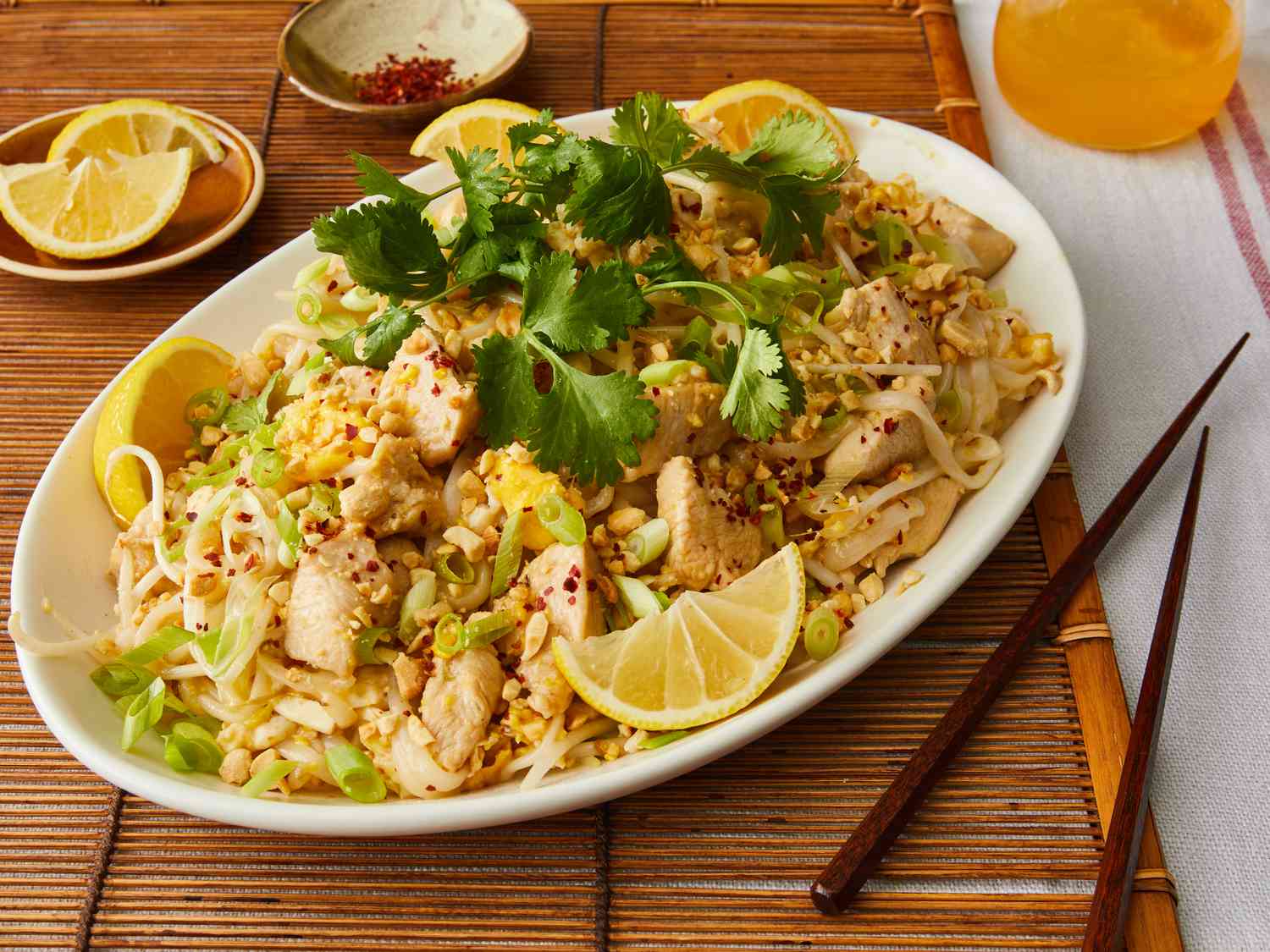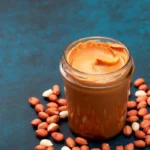
Pad Thai, a beloved dish with a rich history and cultural significance, has become a staple of Thai cuisine both locally and internationally. Originating in the 1930s as a national dish promoted by the Thai government, Pad Thai has evolved into a versatile and flavorful noodle dish enjoyed by people around the world. Let’s delve into the fascinating world of Pad Thai and uncover some intriguing historical facts and numerical trivia that make this dish truly unique.
- The origin of Pad Thai can be traced back to the 1930s, during the reign of Prime Minister Plaek Phibunsongkhram, who aimed to promote a national identity and encourage the use of local ingredients in Thai cuisine.
- In 1939, the Thai government organized a food fair in Bangkok, where Pad Thai was introduced as a national dish, using noodles imported from China.
- Pad Thai was originally called “Kway Teow Pad Thai” or “Thai stir-fried noodles”.
- The recipe for Pad Thai was published in the official Thai government gazette in 1940, which included ingredients such as rice noodles, tofu, bean sprouts, peanuts, and eggs.
- Pad Thai was designed to be a quick, easy, and inexpensive dish that could be made with locally sourced ingredients, making it a popular street food in Thailand.
- The dish was originally prepared with soaked dried rice noodles, but fresh rice noodles are now commonly used.
- The traditional Pad Thai recipe calls for tamarind paste, which gives the dish its tangy flavor, along with fish sauce, palm sugar, and chili flakes for seasoning.
- Pad Thai is typically served with lime wedges and crushed peanuts on the side.
- The dish has become a symbol of Thai cuisine and is enjoyed worldwide.
- The world’s largest Pad Thai, measuring 1,500 meters in length, was created in Bangkok in 2017 to celebrate the 50th anniversary of the Thai-Chinese Cultural Festival.
- Pad Thai is often made with shrimp, but chicken, beef, pork, or tofu can also be used as alternatives.
- The dish is typically cooked in a wok over high heat, allowing the noodles to be stir-fried quickly and evenly.
- The origin of the name “Pad Thai” is unclear, but it is believed to have been derived from the word “phat,” which means “stir-fried” in Thai.
- The Thai government promoted Pad Thai as a national dish to reduce the consumption of rice, which was considered a staple food in Thailand.
- The popularity of Pad Thai has led to the creation of various versions, including vegetarian and vegan options.
- The dish is often served with a side of pickled vegetables, such as radishes or cucumbers, to balance the flavors.
- Pad Thai is a versatile dish that can be customized to suit individual tastes and dietary preferences.
- The traditional recipe for Pad Thai calls for the use of palm sugar, which is made from the sap of the sugar palm tree.
- The use of tamarind paste in Pad Thai is a nod to the dish’s Indian influence, as tamarind is a common ingredient in Indian cuisine.
- The noodles used in Pad Thai are typically made from rice flour, which makes them gluten-free.
- The dish is often garnished with scallions or cilantro, adding a fresh and aromatic touch to the dish.
- Pad Thai is a popular dish in Thai restaurants around the world, and its popularity has led to the introduction of other Thai noodle dishes, such as Pad See Ew and Drunken Noodles.
- The dish is often served with a side of rice, which can be used to soak up any remaining sauce.
- Pad Thai is a dish that reflects the rich and diverse culinary history of Thailand, incorporating elements of Chinese, Indian, and Malay cuisine.
- The dish is often enjoyed as a quick and satisfying meal, making it a popular choice for both locals and tourists in Thailand.
- The popularity of Pad Thai has led to the creation of instant noodle versions, which can be prepared quickly and easily at home.
- The dish is often served with a side of chili sauce, allowing diners to adjust the level of spiciness to their liking.
- The use of fish sauce in Pad Thai is a nod to the dish’s coastal origins, as fish sauce is a common ingredient in Thai cuisine.
- The dish is often prepared with a variety of vegetables, including bean sprouts, carrots, and bell peppers, adding a crunchy texture and a burst of color to the dish.
- The use of peanuts in Pad Thai is a nod to the dish’s Chinese influence, as peanuts are a common ingredient in Chinese cuisine.
- The dish is often served with a side of boiled eggs, which can be added to the noodles for extra protein.
- The traditional recipe for Pad Thai calls for the use of preserved radishes, which add a salty and tangy flavor to the dish.
- The dish is often prepared with a variety of proteins, including shrimp, chicken, beef, pork, and tofu, making it a versatile and satisfying meal.
- The dish is often served with a side of fresh herbs, such as basil or mint, adding a fragrant and aromatic touch to the dish.
- The use of tamarind paste in Pad Thai is a nod to the dish’s Indian influence, as tamarind is a common ingredient in Indian cuisine.
- The dish is often prepared with a variety of vegetables, including bean sprouts, carrots, and bell peppers, adding a crunchy texture and a burst of color to the dish.
- The dish is often garnished with lime wedges, adding a tangy and refreshing touch to the dish.
- The traditional recipe for Pad Thai calls for the use of preserved radishes, which add a salty and tangy flavor to the dish.
- The dish is often prepared with a variety of proteins, including shrimp, chicken, beef, pork, and tofu, making it a versatile and satisfying meal.
- The dish is often served with a side of fresh herbs, such as basil or mint, adding a fragrant and aromatic touch to the dish.
- The dish is often prepared with a variety of vegetables, including bean sprouts, carrots, and bell peppers, adding a crunchy texture and a burst of color to the dish.
- The dish is often garnished with scallions or cilantro, adding a fresh and aromatic touch to the dish.
- The traditional recipe for Pad Thai calls for the use of palm sugar, which is made from the sap of the sugar palm tree.
- The use of fish sauce in Pad Thai is a nod to the dish’s coastal origins, as fish sauce is a common ingredient in Thai cuisine.
- The dish is often served with a side of chili sauce, allowing diners to adjust the level of spiciness to their liking.
- The traditional recipe for Pad Thai calls for the use of preserved radishes, which add a salty and tangy flavor to the dish.
- The dish is often prepared with a variety of proteins, including shrimp, chicken, beef, pork, and tofu, making it a versatile and satisfying meal.
- The dish is often served with a side of fresh herbs, such as basil or mint, adding a fragrant and aromatic touch to the dish.
- The use of tamarind paste in Pad Thai is a nod to the dish’s Indian influence, as tamarind is a common ingredient in Indian cuisine.
- The dish is often prepared with a variety of vegetables, including bean sprouts, carrots, and bell peppers, adding a crunchy texture and a burst of color to the dish.
- The dish is often garnished with lime wedges, adding a tangy and refreshing touch to the dish.
- The traditional recipe for Pad Thai calls for the use of palm sugar, which is made from the sap of the sugar palm tree.
- The use of fish sauce in Pad Thai is a nod to the dish’s coastal origins, as fish sauce is a common ingredient in Thai cuisine.
- The dish is often served with a side of chili sauce, allowing diners to adjust the level of spiciness to their liking.
- The traditional recipe for Pad Thai calls for the use of preserved radishes, which add a salty and tangy flavor to the dish.
- The dish is often prepared with a variety of proteins, including shrimp, chicken, beef, pork, and tofu, making it a versatile and satisfying meal.
- The dish is often served with a side of fresh herbs, such as basil or mint, adding a fragrant and aromatic touch to the dish.
- The use of tamarind paste in Pad Thai is a nod to the dish’s Indian influence, as tamarind is a common ingredient in Indian cuisine.
- The dish is often prepared with a variety of vegetables, including bean sprouts, carrots, and bell peppers, adding a crunchy texture and a burst of color to the dish.
- The dish is often garnished with scallions or cilantro, adding a fresh and aromatic touch to the dish.
- The traditional recipe for Pad Thai calls for the use of palm sugar, which is made from the sap of the sugar palm tree.
- The use of fish sauce in Pad Thai is a nod to the dish’s coastal origins, as fish sauce is a common ingredient in Thai cuisine.
- The dish is often served with a side of chili sauce, allowing diners to adjust the level of spiciness to their liking.
- The traditional recipe for Pad Thai calls for the use of preserved radishes, which add a salty and tangy flavor to the dish.
- The dish is often prepared with a variety of proteins, including shrimp, chicken, beef, pork, and tofu, making it a versatile and satisfying meal.
- The dish is often served with a side of fresh herbs, such as basil or mint, adding a fragrant and aromatic touch to the dish.
- The use of tamarind paste in Pad Thai is a nod to the dish’s Indian influence, as tamarind is a common ingredient in Indian cuisine.
- The dish is often prepared with a variety of vegetables, including bean sprouts, carrots, and bell peppers, adding a crunchy texture and a burst of color to the dish.
- The dish is often garnished with lime wedges, adding a tangy and refreshing touch to the dish.
- The traditional recipe for Pad Thai calls for the use of palm sugar, which is made from the sap of the sugar palm tree.
- The use of fish sauce in Pad Thai is a nod to the dish’s coastal origins, as fish sauce is a common ingredient in Thai cuisine.
- The dish is often served with a side of chili sauce, allowing diners to adjust the level of spiciness to their liking.
- The traditional recipe for Pad Thai calls for the use of preserved radishes, which add a salty and tangy flavor to the dish.
- The dish is often prepared with a variety of proteins, including shrimp, chicken, beef, pork, and tofu, making it a versatile and satisfying meal.
- The dish is often served with a side of fresh herbs, such as basil or mint, adding a fragrant and aromatic touch to the dish.
- The use of tamarind paste in Pad Thai is a nod to the dish’s Indian influence, as tamarind is a common ingredient in Indian cuisine.
- The dish is often prepared with a variety of vegetables, including bean sprouts, carrots, and bell peppers, adding a crunchy texture and a burst of color to the dish.
- The dish is often garnished with scallions or cilantro, adding a fresh and aromatic touch to the dish.
- The traditional recipe for Pad Thai calls for the use of palm sugar, which is made from the sap of the sugar palm tree.
- The use of fish sauce in Pad Thai is a nod to the dish’s coastal origins, as fish sauce is a common ingredient in Thai cuisine.
- The dish is often served with a side of chili sauce, allowing diners to adjust the level of spiciness to their liking.
- The traditional recipe for Pad Thai calls for the use of preserved radishes, which add a salty and tangy flavor to the dish.
- The dish is often prepared with a variety of proteins, including shrimp, chicken, beef, pork, and tofu, making it a versatile and satisfying meal.
- The dish is often served with a side of fresh herbs, such as basil or mint, adding a fragrant and aromatic touch to the dish.
- The use of tamarind paste in Pad Thai is a nod to the dish’s Indian influence, as tamarind is a common ingredient in Indian cuisine.
- The dish is often prepared with a variety of vegetables, including bean sprouts, carrots, and bell peppers, adding a crunchy texture and a burst of color to the dish.
- The dish is often garnished with lime wedges, adding a tangy and refreshing touch to the dish.
- The traditional recipe for Pad Thai calls for the use of palm sugar, which is made from the sap of the sugar palm tree.
- The use of fish sauce in Pad Thai is a nod to the dish’s coastal origins, as fish sauce is a common ingredient in Thai cuisine.
- The dish is often served with a side of chili sauce, allowing diners to adjust the level of spiciness to their liking.
- The traditional recipe for Pad Thai calls for the use of preserved radishes, which add a salty and tangy flavor to the dish.
- The dish is often prepared with a variety of proteins, including shrimp, chicken, beef, pork, and tofu, making it a versatile and satisfying meal.
- The dish is often served with a side of fresh herbs, such as basil or mint, adding a fragrant and aromatic touch to the dish.
- The use of tamarind paste in Pad Thai is a nod to the dish’s Indian influence, as tamarind is a common ingredient in Indian cuisine.
- The dish is often prepared with a variety of vegetables, including bean sprouts, carrots, and bell peppers, adding a crunchy texture and a burst of color to the dish.
- The dish is often garnished with scallions or cilantro, adding a fresh and aromatic touch to the dish.
- The traditional recipe for Pad Thai calls for the use of palm sugar, which is made from the sap of the sugar palm tree.
- The use of fish sauce in Pad Thai is a nod to the dish’s coastal origins, as fish sauce is a common ingredient in Thai cuisine.
- The dish is often served with a side of chili sauce, allowing diners to adjust the level of spiciness to their liking.
- The traditional recipe for Pad Thai calls for the use of preserved radishes, which add a salty and tangy flavor to the dish.
Pad Thai FAQs:
1. What is Pad Thai?
Pad Thai is a stir-fried rice noodle dish that’s a staple of Thai cuisine. It’s made with thin rice noodles, eggs, vegetables (often bean sprouts and scallions), and protein like tofu, chicken, shrimp, or pork. The dish is flavored with a tangy tamarind sauce, fish sauce, palm sugar, garlic, and chilies, creating a delightful balance of sweet, salty, sour, and savory flavors. It’s typically garnished with crushed peanuts, lime wedges, and sometimes additional chilies for those who like it spicier.
2. Is Pad Thai spicy?
Pad Thai can be spicy, but it’s not necessarily a super hot dish. It all depends on how much chili is added during cooking. Traditionally, it has a mild heat level. You can usually request how spicy you’d like it when ordering at a restaurant, or adjust the spice level to your preference if you’re making it at home.
3. What are some variations of Pad Thai?
There are regional variations of Pad Thai throughout Thailand. Some places might use shrimp paste instead of fish sauce, or add vegetables like morning glory or banana blossom. Vegetarian Pad Thai is also popular, substituting tofu or other plant-based proteins for meat.
4. Is Pad Thai really authentic Thai food?
While Pad Thai is undeniably popular in Thailand and a beloved national dish, it’s actually a relatively recent invention. It’s believed to have originated in the mid-20th century during World War II to promote rice consumption and national identity. This means it doesn’t have the long history of some other Thai curries or noodle dishes.
5. What’s the difference between restaurant Pad Thai and Pad Thai made at home?
Restaurant Pad Thai often has a bright orange color due to the use of commercially available tamarind sauce or added ingredients like paprika. Authentic Pad Thai has a more reddish-brown color from real tamarind. Additionally, achieving the same level of smoky wok char from a street vendor’s high-powered flame can be difficult in a home kitchen. However, Pad Thai is still a very achievable and delicious dish to make at home!









